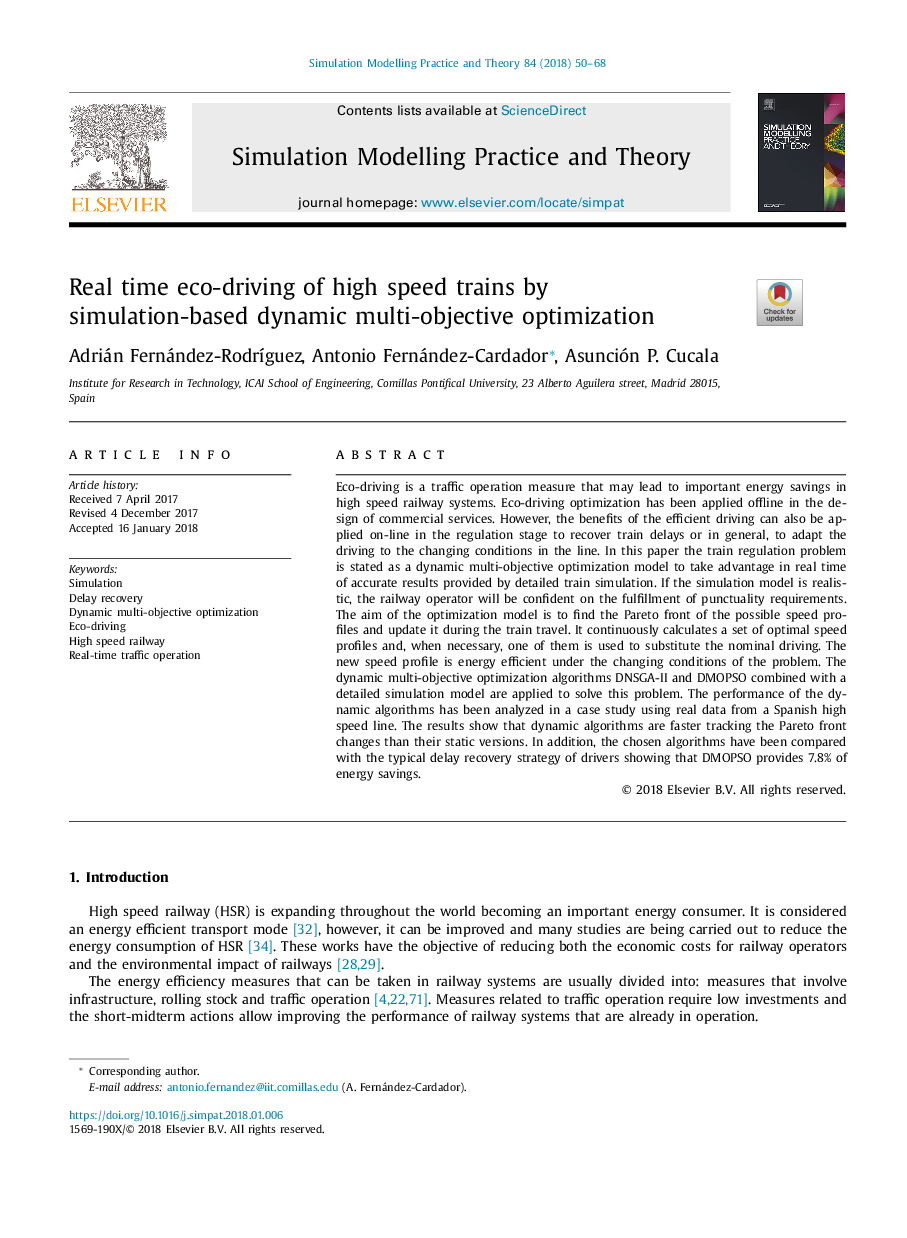ترجمه فارسی عنوان مقاله
زمان واقعی رانندگی با سرعت بالا از قطار با سرعت شبیه سازی مبتنی بر پویا چند منظوره بهینه سازی
عنوان انگلیسی
Real time eco-driving of high speed trains by simulation-based dynamic multi-objective optimization
| کد مقاله | سال انتشار | تعداد صفحات مقاله انگلیسی |
|---|---|---|
| 95760 | 2018 | 19 صفحه PDF |
منبع

Publisher : Elsevier - Science Direct (الزویر - ساینس دایرکت)
Journal : Simulation Modelling Practice and Theory, Volume 84, May 2018, Pages 50-68
ترجمه کلمات کلیدی
شبیه سازی، بازیابی تاخیر، بهینه سازی چند هدفه پویا، رانندگی با محیط زیست، راه آهن با سرعت بالا، عملیات ترافیکی در زمان واقعی،
کلمات کلیدی انگلیسی
Simulation; Delay recovery; Dynamic multi-objective optimization; Eco-driving; High speed railway; Real-time traffic operation;

